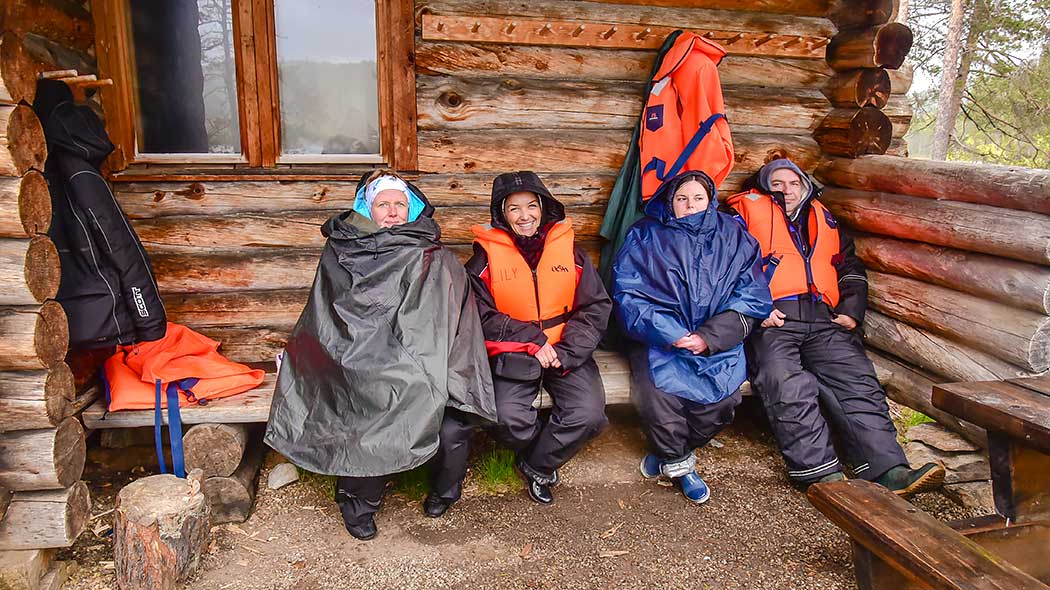Safety
Enjoying the great outdoors in Finland is usually a safe and rewarding activity, but whether hiking, biking, canoeing, cross-country skiing, snowshoeing, or berry/mushroom picking always be aware of the risks. Whenever venturing into nature be sure to always have a map and compass and know how to use them. Always travel with someone. Inform family or friends of your destination, and sign in whenever possible at visitor centres or wilderness huts. Be prepared for changeable conditions by wearing appropriate clothing and always carry a fully-charged mobile phone, a first aid kit, matches, and a headlamp. Seek advice, hire a guide, or join a guided tour before venturing into the wilderness especially if you lack experience.

Weather – The weather in Finland varies greatly according to the season from hot summer days of +30 degrees C or higher to -30 degrees C or lower on the coldest winter days. The weather is always highly changeable anytime of the year especially in the far north. In summer the temperature can fall rapidly, and severe thunderstorms with heavy rainfall, high winds, and lightning strikes can appear quickly. Take special precautions during cold winter days. Long exposure to severe cold can be life threatening. Always carry proper clothing for wet and cold conditions and pay close attention to weather forecasts. The Finnish Meteorological Institute (en.ilmatieteenlaitos.fi) offers an app with local forecasts, live radar tracking, time of sunrise and sunset, and local weather and fire warnings. Darkness comes early in the winter months so plan carefully and carry a headlamp.

Water/food – Always carry water when venturing into nature. In Finland there are plentiful sources of freshwater in lakes, rivers, and streams, but they may not be safe to drink and require boiling or another acceptable form of treatment like filtration. Using water from natural sources is always at your own risk. On extended hikes, always carry extra food and snacks.

Terrain – Most of Finland is relatively flat with few dramatic changes in elevation, but trails can be steep and covered in rocks or tree roots which are slippery when wet or icy. Always wear appropriate footwear. Mires and bogs can be treacherous to cross and are best avoided. Use great caution when wading across rivers. Underwater rocks are extremely slippery. Always remain on marked trails whenever possible and use trekking poles on treacherous terrain.
In winter, snow drifts can be high. Be aware of avalanche risks when snowshoeing or wilderness skiing. Use extreme caution when venturing onto ice. Never step onto a frozen lake or river unless you are absolutely certain that there is enough ice to support you. Ice thickness can vary especially over moving water. Ice formed over flowing water or currents is often dangerous.
When walking or cycling on roadways always obey traffic laws and use lights and reflectors. Always wear a helmet when cycling. When canoeing, kayaking, or paddle boarding always wear a life vest and use caution when paddling near shipping lanes. Ships and speedboats may have difficulty seeing you and waves from wakes can be high and travel long distances.
Wear bright colours for safety. They can help spot you from a distance, e.g. in emergency situations.

Fire – Prevent forest fires! Always use great caution when starting a campfire and observe grass and forest fire warnings. Campfires are not allowed if warnings are in effect. Use only designated campfire sites and use the firewood provided.
Wildlife/plants – Never intentionally approach or disturb reindeer or other wildlife. Observe wildlife from a distance. Do not feed wildlife and do not leave food in huts or discard food in nature. This can attract unwanted guests or injure wildlife. Only pick ripe berries and mushrooms that you can identify as edible. Some mushrooms are extremely poisonous and can cause serious illness or death if consumed.
Emergencies – The emergency number in Finland is 112 (for satellite phones +3589 2355 0545). Use the 112 Suomi phone app which automatically sends your coordinates to rescue services. Phone coverage in Finland is excellent but signals might be weak in remote areas. Go to higher ground to get a better connection. Phone batteries drain more quickly in extreme cold so carry your phone inside your clothing. If you are lost or injured remain in the same place until rescuers find you.
112 Emergency Number
If you have an emergency during your trip, such as getting lost, injured or finding a wildfire, call 112. Read more detailed emergency instructions.

Download the 112 Finland application (112.fi) to your phone. When an emergency call is made through the 112 Finland application, the emergency centre attendant is automatically informed of the caller's location.
It is recommended to keep the mobile phone warm and to bring extra food and water with you. There are many excursion locations with no mobile coverage and some mobile phones does not work in sub-zero temperatures, that is why it is always a good idea to let someone know about your itinerary and timetable.
